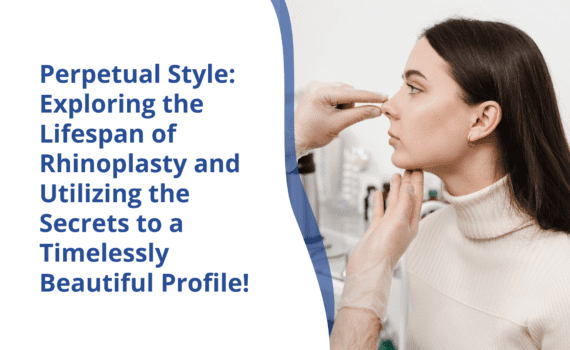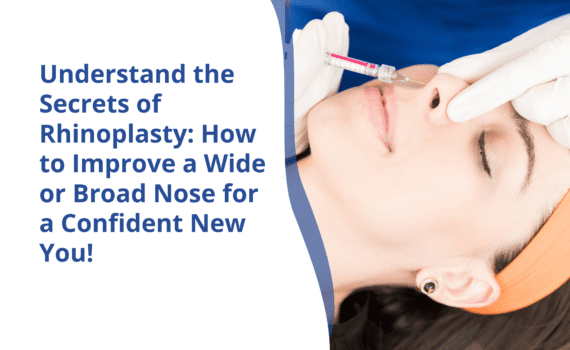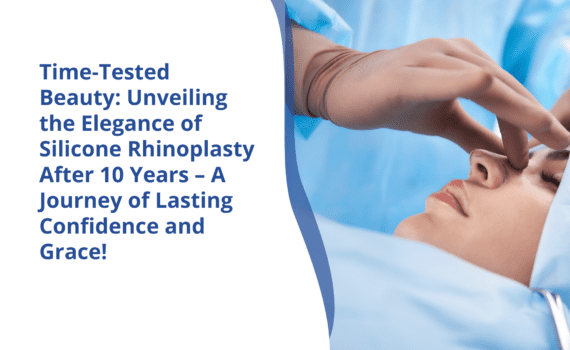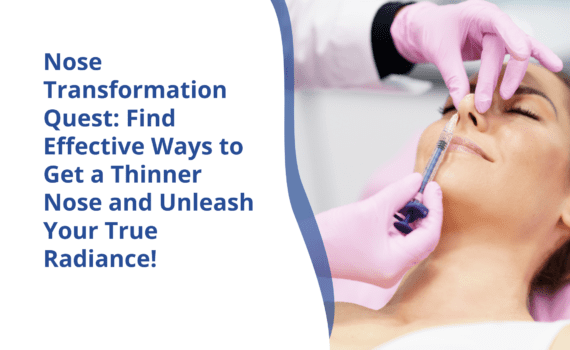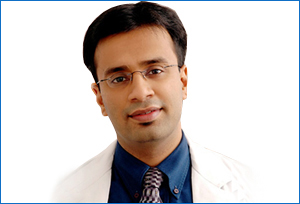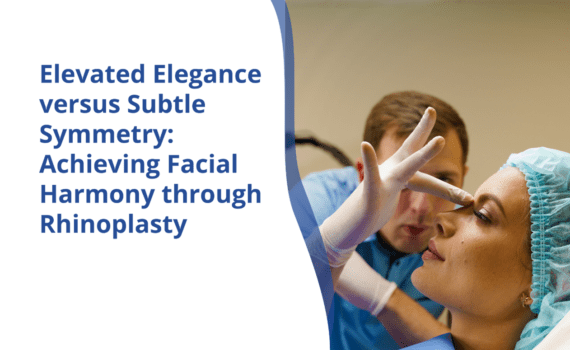


Elevated Elegance versus Subtle Symmetry: Achieving Facial Harmony through Rhinoplasty
The nose knows that beauty lies in each individual’s uniqueness. It is the most prominent feature of the face. The nose is also often associated with pride and ego in many cultures. With the popularity of selfies rising every day, everyone wants to look their best in the photos. The nose can be a pain point for people looking in the mirror, and most are particularly unhappy with the shape and height of their nasal bridge.
While there is no wrong or right shape of the nose, the perfect nose shape would blend seamlessly with the rest of the facial features. The nose should highlight the eyes and other facial features while enhancing the essence of ethnicity.
According to the best rhinoplasty surgeon, the nose job in India is done based on the golden ratio as a guide for designing the ideal nose that best suits a face. The nose measurements are done by measuring the angle between the nose’s bridge and forehead and the tip and upper lip. The height from the forehead to nose bridge should be 115° ~ 130° angle. The ideal angle between the nose tip and the upper lip should be 95° to 100°. Nose plastic surgery in India utilizes the power of 3D imaging to give their patients an overview and better understanding of the before and after of the surgery.
The Nasal Bridge
Also referred to as the dorsum, the bridge of the nose extends from between the eyes to the tip of the nose. It is made of bone at the top and cartilage towards the tip. The most common nose plastic surgery in India is the dorsal hump rhinoplasty.
The nasal bridge plays many vital roles in the overall functioning and appearance of the nose, such as:
- Support and structure: the nasal bridge is essential in providing structural support to the nose and maintaining its shape and stability. The bridge bone and cartilage are the upper nose’s framework and ensure the strength and integrity of the nasal structure.
- Aesthetic appearance: The height and width of the nasal dorsum play a definitive role in the nose’s appearance. The dorsum’s shape influences the nose’s height, width, and overall profile. Various factors, such as genetics, ethnicity, etc., also influence the shape and contour of the nasal bridge.
- Airflow regulation: The dorsum bridge does not play a direct role in airflow regulation, but the shape and contour of the nasal bridge do affect the airflow dynamics in the nose. A high or low nasal bridge may impact nasal airflow patterns and breathing.
Apart from all of the above advantages, the nasal bridge also supports your eyewear. A well-defined dorsum bridge helps stabilize and support the eyewear, ensuring a comfortable fit without pinching or pressing the skin. This means there is no discomfort in wearing sunglasses with style.
Whether you are looking for elevated elegance or subtle changes in your facial profile, dorsal Rhinoplasty is the way to go. Correcting the nasal bridge with a low or high bridge will improve facial symmetry and enhance your facial features.
Dorsal Rhinoplasty
Nasal bridge correction is an essential aspect of nose plastic surgery in India. There are two types of nose bridge corrections in India.
Low and High Bridge Rhinoplasty
A low nose bridge is very common with people of Asian, African, or Hispanic descent. The shape of the nose and bridge is often dictated by genetics. The high nose bridge is familiar to people of Roman or Greek descent. However, some defects, injuries, disorders, infections, or medical conditions can influence the final shape of the nose. The low nose bridge can also be because of saddle nose depression, and the high nasal bridge can have a bump on it known as a saddle hump.
How Do You Know If You Have A High Or Low Bridge?
It is straightforward. Stand in front of the mirror and look at the nose. If the pupils of your eyes align with the bridge, it is considered a low bridge, and if the pupils are above the bridge, then the dorsum height is above average (high nasal bridge).
Low Nasal Bridge Causes
The underlying causes of the low nasal bridge are often present at birth and are easily diagnosed at or shortly after birth. Genetic disorders that might cause the low nasal bridge include Cleidocranial dysostosis, Williams syndrome, and Down Syndrome. If you have a low nasal bridge, discuss possible solutions through a nose job in India with an expert rhinoplasty surgeon. A low nasal bridge can cause issues such as
- Breathing difficulties
- Eyewear fit as the glasses might slip down and put pressure on cheeks or temples because of lack of alignment.
- Lack of self-esteem as the tip of the nose might appear upturned
Talk to a good rhinoplasty surgeon who can evaluate your nasal structure and recommend appropriate treatment options.
High nasal bridge causes
The dorsal hump and the high nasal bridge can be because of
- Genetics
- Ethnicity
- Developmental factors during fetal treatment
- Trauma or injury to the nose
- Aging
- Previous surgical interventions, such as nasal augmentation
The nose may look too big, or the eyes may appear narrower because of the high nasal bridge.
The dorsum should be a straight profile that blends seamlessly with the tip of the nose. Dorsal Rhinoplasty for low bridge and high bridge is a sculpting rhinoplasty that involves working with the cartilage and bones in the nose to create a smooth and balanced nasal profile.
Dorsal Rhinoplasty
This type of nose plastic surgery in India is done by expert rhinoplasty surgeons as it involves many delicate procedures to ensure that the nose’s functionality is not disturbed in any way. The shape and contour of the nasal bridge can be adjusted in many ways, such as by making the bridge narrower or wider, adjusting the tip shape and orientation, etc.
Rhinoplasty or nose job in India is a surgical procedure, and there are general steps to the procedure.
- After consultation, the surgeon will discuss the steps for treatment with you. They will explain the procedure, recovery, and expected changes.
- The procedure
- During Rhinoplasty for a low nasal bridge, the surgeon typically uses techniques to augment and build up the bridge of the nose. This can involve using implants, cartilage grafts (often harvested from the patient’s body, such as the septum or ear), or synthetic materials to increase the bridge’s height. The procedure will be tailored to your specific anatomy and aesthetic goals. When planning the surgery, your surgeon will consider factors such as the width of your nose, the shape of your face, and your desired outcome.
- During a nose job in India to correct the high nasal bridge, the surgeon has to remove the dorsal hump and carefully shave off the extra bone and cartilage to even out the surface of the nasal bridge. For noses that look too big for the face, the surgeon makes controlled fractures to the bones on the nose bridge and shaves down the extra cartilage and bones to reduce the shape and size of the nose bridge.
- Recovery: Recovery from Rhinoplasty can vary from person to person but typically involves some swelling, bruising, and discomfort in the days following surgery. You may need to wear a splint or bandage on your nose for some time to support the healing process. Following your surgeon’s post-operative instructions closely is vital to ensure proper healing and optimal results.
Depending on the shape of the nose and the magnitude of corrections needed, non-surgical procedures such as dermal fillers can be used to fill out the areas around the hump or the dip in the nose and build up and refine the bridge and tip without surgical interventions.
The cost of nose shape surgery in India can vary depending on factors such as the surgeon’s experience, the complexity of the procedure, and the geographic location of the surgery. In addition to the surgeon’s fees, you may also need to consider other costs, such as anesthesia, facility fees, and post-operative care.
For More Details Connect Now.
